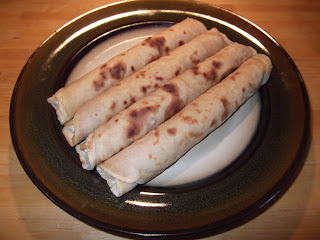 Potato has never gone bad in my house… I love potatoes and there is never a bad time to eat them… One of my favorite dishes is potato pizza. It is a true potato lover delight and it is gluten free. I make vegetarian version, but the meat of any kind can be added.
Potato has never gone bad in my house… I love potatoes and there is never a bad time to eat them… One of my favorite dishes is potato pizza. It is a true potato lover delight and it is gluten free. I make vegetarian version, but the meat of any kind can be added. INGREDIENTS:
- 3 - baking potatoes - 5”
- 3 - eggs
- 1 cup - shredded mozzarella cheese
- 2 cups - cut broccoli
- 1 cup - chopped red pepper
- 1 cup - chopped green pepper
- 1 cup - sliced mushrooms
- 1 tbsp - all purpose seasoning
- salt, pepper
EQUIPMENT:
- 4qt pot
- 12" non-stick frying pan with lid (preferably glass), spatula
DIRECTIONS:
1. Peal potatoes and cut them in 4ths,
2. Pour 1 qt of water into 4 qt pot, add 1 tsp of salt, put potatoes in the pot and bring to boil, cook them for 20-25 min or until fork tender. Make sure they do not overcook. In this dish it is ok to slightly undercook the potatoes,
3. Chop the mushrooms and peppers, scramble the eggs with a pinch of salt in the glass or bowl,
4. When potatoes are done cooking, strain the water and cool them, then cut them into ¼” to 3/8” slices, sprinkle the all purpose spices, mix and fry lightly on a non-stick frying pan for 10-15 min. A little oil can be added. When the potato slices are lightly browned, shape them into a flat pie on the bottom of the frying pan.
5. Pour the scrambled eggs evenly on top of the potatoes, toss the broccoli, peppers, mushrooms and cheese on top, add salt and pepper, cover with lid (preferably glass - easy to peak) and cook on top of the stove for about 15 min on very low heat, or until the eggs solidified and cheese melted.
You can place the whole dish in the 350 F oven for the same time, just make sure that the pan and the lid have no plastic parts that can melt in the heated oven.
Other ingredients can be added according to the personal taste.
Enjoy!!




































